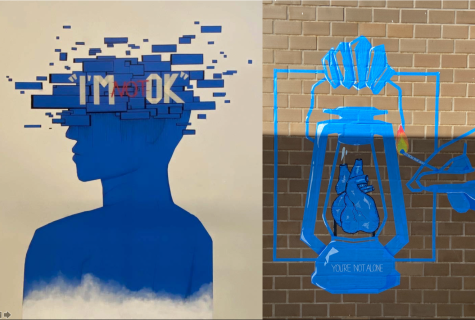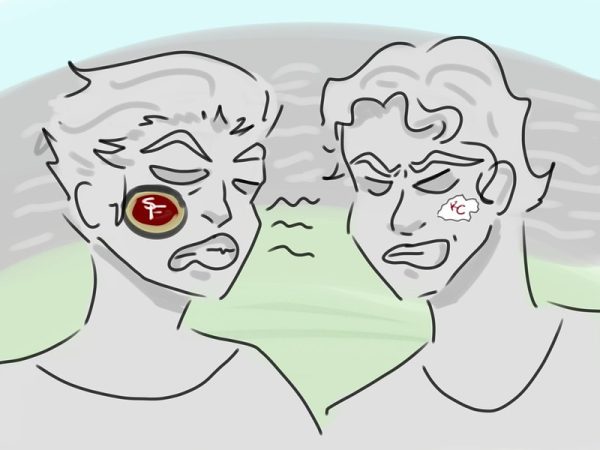Know the score: 3 seniors reflect on the cost of their SAT preparation

Oliver*, a current senior, was singled out. His free diagnostic test indicated that he would already score over a 2100 on the SAT, and so he was placed in Elite’s SAT 2100 Plus Program.
Unlike the Elite Boot Camp, in which students attend class four or five days per week for eight weeks, the 2100 Plus Program requires class two days a week for fourteen weeks over the summer. In the bootcamp, students spend their time taking practice tests and memorizing over one hundred vocabulary terms per week. The 2100 Program is a condensed, more rigorous version of the same material. Elite recommends it “for the highly motivated few who want to attain truly impressive SAT scores.”
But these days, there are more than a few students who want to attain “truly impressive” scores. Many Dougherty students spend the summer before their junior year preparing for the SAT, either by self-studying or, for the majority, attending classes. In San Ramon, Elite is not the only company to profit off the desire for higher test scores. Ames Prep, C2 Education and ThinkTank also run major prep centers in San Ramon, though Elite is the most widely and openly discussed among DVHS students.
Oliver believes that his peers were responsible for his choice in test preparation “If there wasn’t the collective pressure to—or the collective idea that Elite was somehow beneficial, then I probably wouldn’t have taken Elite. But since that was the majority opinion…as far as I could perceive, then I did take Elite.”
Melanie, a senior who took the Elite Bootcamp, agrees. “I think Dougherty definitely affected [my decision]. We’re all supposed to get perfect scores and if you get an 1800 you’re really stupid, but if you go to another school and get an 1800 you’re doing excellent.”
But it is hard not to argue that the pressure would still be there, regardless of the hypercompetitive atmosphere Dougherty creates. In 2011, the average scores at Harvard (2230), UC Berkeley (2050), UCLA (1940) and Stanford (2185) were already high. The reports of the 75th percentile scores for the same colleges in 2013 were 2390, 2230, 2130, and 2330, respectively. And although most colleges agree that test scores aren’t everything, the statistics certainly argue that they are something.
For most students, taking test prep classes are helpful not necessarily for learning material, but practicing discipline.
Melanie says, “If you’re one who needs someone to make sure you’re disciplined and doing your work, then it definitely puts you on the right track.”
And test preparation is certainly a rigid structure within a class or boot camp setting. Some students who want extra practice before the first administration of the SAT of the school year in October often transition to a weekend program. At Elite, this consists of a three-and-a-half hour “full-length practice test under realistic testing conditions” followed by three classes: Critical Reading, Writing, and Math. All three classes have extensive homework that reinforces the classroom lessons. Elite describes their program as having produced many “outstanding SAT scores, including many perfect scores.” It then counters, “But just as importantly, [the program] produces students who are ready for the academic rigors of college. At Elite, we don’t just prepare students for a test. We prepare them for the future.”
Oliver would argue that they do neither, stating “I think Elite is a waste of time. While I do think it did contribute to my score to some degree, I think that above [a score of] 2000 is mostly luck. And so there are wild fluctuations from practice test to practice test and ultimately to the real test…I learned that not only is the SAT an inaccurate test of academic aptitude, I think it’s a skill in and of itself that’s ultimately useless in our daily lives.”
Melanie also stated, “I don’t think [the test] is a good gauge to how smart a person is.” But neither of them were particularly upset with their choice of preparation, instead approaching the concept of preparing and taking the SATs with a sense of apathetic resignation.
Nor did they have much to say about those who chose to self-study. As Melanie suggests, “I think you do whatever works for you. I’m sure self-studies have gotten 2400 and kids who have attended Elite have gotten 1400s. It just really depends on what works for you, I don’t think one way is better than another.”
Julius is an example of the impressively successful self-studying group. He began around the same time as Oliver and Melanie, the summer before junior year.
“I was studying at a low burn until November, maybe about one or two hours a week, and then I took the test in November and I got a pretty decent score, but I wanted to improve, so then I sort of ramped up my studying.” He started taking practice tests at Elite every weekend starting in April and retook the SAT in June.
On the retake, Julius got a 2400.
His reason for not attending the classes? “Because the person is teaching to a larger class, a larger audience, he’s going to have to focus on some topics which I already knew. So I thought that I could save time by looking at the topics on my own, studying specifically what I needed,” he said. Julius spent a lot of his time with test prep books, and estimates he spent 100 hours in total preparing for the two times he took the SAT.
But taking practice tests at a Test Prep Center indicates that Julius, like his peers, isn’t completely comfortable with pure self-studying. “The Elite people probably, definitely…I’m pretty sure they know what they’re doing. They know what the tips of the trade are, they know the formulas that you need to do to answer each problem, and I had to look up a lot of that stuff on my own, and I had to do a lot of research to approach the SAT like I did. I feel like both approaches are valid,” he mused.
While neither side had a strong opinion about the other’s approach to the SAT, all three had much to say about the revamped test. In Spring 2016, CollegeBoard intends to reveal its new test book that parallels the redesigned SAT. The redesigned SAT features major changes, including more relevant vocabulary, a switch to an analytical essay and no penalty for incorrect answers.
Julius has an overall positive view of these changes. “I feel like there’s nothing that the SAT can really do to make the tests less competitive, or make it perceived to be less competitive; however they know that people are going to study really really hard at the topics that are covered on the SATs, and just improving those topics, making sure that the vocab is not esoteric,” he catches himself. “Stuff that people will never use, but rather things that kids need to know for their day-to-day life [is a good thing].” He also approves of the switch away from a personal essay, explaining that in its current format, it is easy to fabricate personal examples to answer the prompt since the essay readers do not know the test-taker.
Melanie states, “I think the first two are practical, and I think those are good changes. But if you get something wrong there should be a penalty. I mean if the test is meant to prepare for life…when you do things wrong there is a penalty.” Previously, filling in a wrong answer for the test would result in 1/4 point reduction; it will not affect scores on the new version. In addition, the test will be on a scale of 400-1600 instead of the current 600-2400. She believes that this will make the test easier, but worries that “in turn you’re just going to see more perfect scores, so it’s probably going to make it more competitive.”
Oliver agrees, “I think it’s a step in the right direction but…I don’t think it will change the competition. If it is 1600, then I think it makes each point more valuable.” When asked for any words of wisdom for future generations of test-takers, he gives a pained smile and then says, “Good luck.”
*Names have been changed.
















